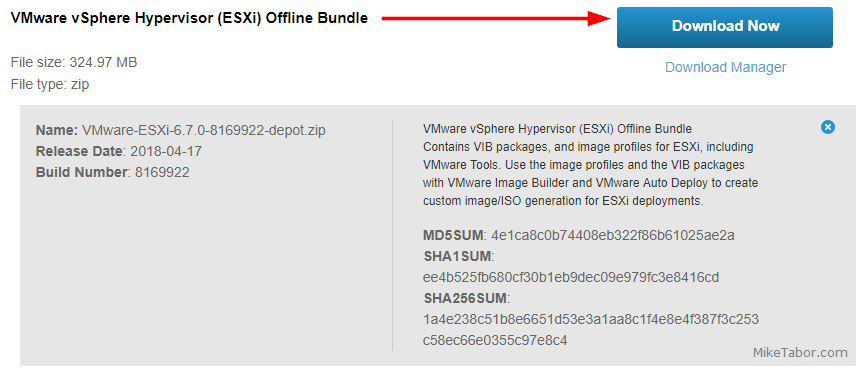

- #VMWARE ESXI 6.7 VS 6.5 DRIVERS#
- #VMWARE ESXI 6.7 VS 6.5 UPDATE#
- #VMWARE ESXI 6.7 VS 6.5 MANUAL#
- #VMWARE ESXI 6.7 VS 6.5 UPGRADE#
This is not the only way to upgrade ESXi hosts, but the easiest, considering that vCenter and vSphere Lifecycle Manager (vLM) weren’t available for the job. Shut down all your VMs running on the host and put the host into maintenance mode.Įxplore VSAN from StarWind StarWind VSAN White Paper Final Words Upload the Offline Bundle to a datastore visible by ESXi host You can do that via the host client or via CLI. Upload the Zip bundle to a datastore visible by ESXi host In this case, you can connect remotely to this host (via jumpbox) and proceed with an upgrade via CLI.ġ. This can be an individual host at the remote office for example. Remote upgrade if you don’t have access to the console – There might be situations (rare) that you don’t have access to the server room and the console.

Otherwise, you won’t be able to connect to the host and do the upgrade. If you’re running into problems with your VIBs (which might be VIBs for your network cards for example) and you must uninstall them before proceeding with the upgrade, the ISO upgrade option might be the way to do so. You’ll then plug-in this USB into your server and reboot (you’ll need to specify the USB boot option in the BIOS).Īfter you boot on the installer (USB or CD-ROM), you’ll simply choose the “Upgrade ESXi, preserve VMFS datastore” option (default) which allows you to keep all files and VMs which you might store and use instead of just wiping everything. Via User interface at the console – after downloading the latest ESXi 7.0 iso, create a USB ESXi installer via some software (check our post here – Create an ESXi 6.5 installation USB under two minutes ). The difference is that the ISO you can boot and follow the upgrade instruction on the screen without knowing any CLI commands, while the Offline Bundle you proceed with an upgrade, via CLI. You can burn the ISO onto a CD-ROM drive and do the upgrade via ISO.
#VMWARE ESXI 6.7 VS 6.5 MANUAL#
Manual upgrade of ESXi 6.7 to 7.0 can be done several waysĪt first, you’ll have to go and download either an upgrade file (also called Offline Bundle) or the full-blown ESXi 7.0 ISO file.ĭownload ESXi 7.0 ISO image or Offline Bundle In this case, you’d have to remove those VIBs prior to upgrading. You might have your vendor hardware VIBs installed on your host, which are not supported in the ESXi 7.0, so those VIBs might block the upgrade process. If you use the general ESXi 7.0 ISO, you might have issues with VIBs installed by your previous ESXi version.

#VMWARE ESXI 6.7 VS 6.5 DRIVERS#
You should also know that if your hardware is server hardware of a particular vendor, there might be a particular ESXi ISO to download because this ISO will contain the vendor’s VIBs and drivers needed by your hardware. In this case, you have to shut down VCSA and all the other VMs running on a particular host, and then do a manual upgrade. The alternative is a manual upgrade of ESXi. vSphere Lifecycle Manager (vLM) is a preferred tool, but for smaller environments you need alternatives.
#VMWARE ESXI 6.7 VS 6.5 UPDATE#
You can also be in a situation where you are running just vSphere Essentials Kit, which does not have the vMotion license, so you cannot use vSphere Lifecycle Manager (previously vSphere Update manager) to update your host where VCSA is running because you cannot put the host into the maintenance mode. If you don’t have vCenter and are still running a couple of ESXi hosts, which are not managed by vCenter server appliance (VCSA), you still need to upgrade ESXi to the latest version. StarWind Virtual Tape Library (VTL) OEM.Software as a Service (SaaS) & Financing.StarWind Virtual Tape Library Appliance (VTLA).


 0 kommentar(er)
0 kommentar(er)
